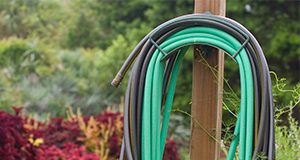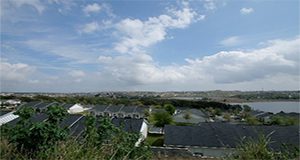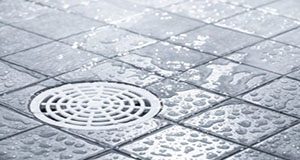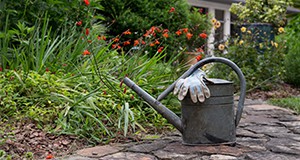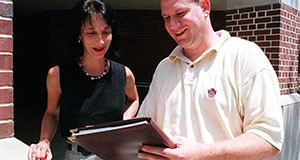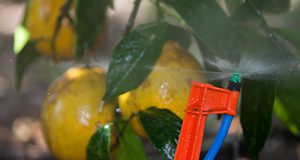This 5-page document presents results of a study designed to understand the knowledge level, adoption rate, and levels of continuance associated with eight water conservation technologies among nursery and greenhouse growers. Written by Laura A. Sanagorski Warner, Alexa J. Lamm, Sarah A. White, Paul R. Fisher, and Peyton N. Beattie and published by the UF/IFAS Department of Agricultural Education and Communication, January 2019.
http://edis.ifas.ufl.edu/wc327
Tag: Alexa J. Lamm
Communicating to the Ages: Influence of Age on Florida Residents’ Informational Processing Behaviors
This 5-page document explores the results of a study in which Florida residents processed video messages about fertilizer best practices, with a focus on how their information-processing behaviors differed by age. Written by Amanda D. Ali, Laura A. Sanagorski Warner, Ashley N. McCleod, Shelli Rampold, and Alexa J. Lamm and published by the UF/IFAS Department of Agricultural Education and Communication, December 2018.
http://edis.ifas.ufl.edu/wc323
Using Video Messages to Promote Residential Adoption of Fertilizer Best Practices
Residents may be inclined to over-fertilize their lawns due to pressure to maintain a neighborhood aesthetic. However, this activity can affect water quality. This 3-page document describes a study that was conducted in order to determine if video messages about fertilizer best management practices influenced perceptions of fertilizer use among residents. Written by Amanda D. Ali, Laura A. Sanagorski Warner, Peyton Beattie, Alexa J. Lamm, and Joy N. Rumble and published by the UF/IFAS Department of Agricultural Education and Communication, July 2018.
http://edis.ifas.ufl.edu/wc309
Using Environmentally Themed Videos to Help Extension Promote Good Landscape Management Behaviors
Water quality and quantity are major issues in the state of Florida, and water resources can be affected by the way residents choose to fertilize and irrigate their lawns and landscapes. This 4-page document discusses the use of videos to promote good landscape management behaviors. Written by Laura A. Sanagorski Warner, Alexa J. Lamm, and Joy N. Rumble and published by the Department of Agricultural Education and Communication, May 2018.
http://edis.ifas.ufl.edu/wc302
How Do Floridians Perceive Their Role in Protecting Water Quality and Quantity Through Landscape Practices?
Florida is faced with challenges in protecting both water quality and quantity; the state’s incredible number of home landscapes can positively or negatively impact water depending on how landscapes are managed. In 2016, Florida residents with irrigated landscapes were surveyed in order to create more effective Extension programs regarding landscape best management practices. This 4-page document discusses the results of this survey. Written by Laura A. Sanagorski Warner, Alexa J. Lamm, and Anil Kumar Chaudhary and published by the UF/IFAS Department of Agricultural Education and Communication, January 2018.
http://edis.ifas.ufl.edu/wc293
Communicating with Extension Clients about Water
Water impacts Florida’s tourism, agriculture, retail, and real estate development industries, all of which significantly contribute to Florida’s economy. Enhancing and protecting water quantity, quality, and supply is of ever-increasing importance to UF/IFAS Extension. This four-page document will provide an overview of how to communicate with Florida residents about water, including information about their preferred communication method and what water-related topics are of interest to Florida residents. Written by Alexa J. Lamm, Phillip Thomas Stokes, and Caroline G. Roper, and published by UF’s Agricultural Education and Communication Department, September 2017.
http://edis.ifas.ufl.edu/wc165
Using Personality Type Preferences to Enhance Team Work in Extension Programs
This three-page fact sheet, the fifth in a series on teaching different personality types, covers the practical ways in which Extension professionals can use the influence of personality type preferences to enhance team dynamics in Extension program development and implementation. This article will cover the Myers-Briggs personality type indicator, True Colors personality type indicator, and the Kirton Adaption Innovation Inventory. Written by J. Brianne Bird, Alexa J. Lamm, and Hannah Carter and published by the Department of Agricultural Education and Communication.
http://edis.ifas.ufl.edu/wc269
Engaging High Water Users in Water Conservation #3: High Water Users' Opportunities to Learn about Water Conservation
Homeowners who use excessive amounts of water to irrigate their landscapes have specified demographic characteristics and have been identified as high water users. This three-page fact sheet is the third in a series discussing how Extension can improve high water users' engagement in water conservation, focusing on how to effectively communicate with high water users about water conservation education. Written by Pei-wen Huang and Alexa J. Lamm and published by the Department of Agricultural Education and Communication.
http://edis.ifas.ufl.edu/wc257
Opinion Leadership and Local Food
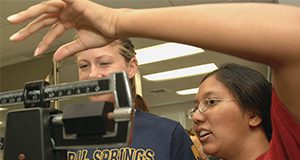
Three new articles have been published as part of a new series on Opinion Leadership and Local Food. These articles look at the role opinion leaders, or individuals who have a large amount of influence within their respective social circles, can have on motivating their peers to join in purchasing local food. The articles are as follows:
1. Opinion Leadership and the Perceived Health Benefits of Local Food (http://edis.ifas.ufl.edu/wc266)
2. Opinion Leadership and the Perceived Effects of Local Food on the Local Community (http://edis.ifas.ufl.edu/wc267)
3. Opinion Leadership and the Perceived Economic Benefits of Local Food (http://edis.ifas.ufl.edu/wc268)
Written by Layne S. Marshall, Melissa R. Taylor, and Alexa J. Lamm and published by the Department of Agricultural Education and Communication.
Engaging High Water Users in Water Conservation #2: High Water Users' Water-related Behaviors and Willingness to Act
Approximately 50% of Floridians’ daily water consumption is used for outdoor purposes, such as landscape irrigation; this is 20% higher than the national average. In order to alleviate the pressure on the precious water resources in Florida from various demands, increased public awareness and engagement in water conservation is needed especially among high water users. This four-page fact sheet is the second in a series discussing how Extension can improve high water users’ engagement in water conservation with a focus on high water users’ water-related behavior and willingness to act. Written by Pei-wen Huang and Alexa J. Lamm and published by the Department of Agricultural Education and Communication.
http://edis.ifas.ufl.edu/wc256
Engaging High Water Users in Water Conservation #1: High Water Users' Experiences and Perceptions of Water
Florida has an abundance of water, but still faces an increased pressure on water resources because of a growing population, prosperous tourism, and an active agricultural industry. This five-page fact sheet is the first in a series discussing how Extension can improve high water users' engagement in water conservation by focusing on high water users' characteristics, experiences with water issues, and perceptions of water. Written by Pei-wen Huang and Alexa J. Lamm and published by the Department of Agricultural Education and Communication.
http://edis.ifas.ufl.edu/wc255
Encouraging Landscape Water-Conservation Behaviors #4: Florida Homeowners' Reactions to Messages that Encourage Landscape Water Conservation Practice Adoption
This is the fourth publication in a series focused on improving and encouraging water conservation among Florida residents who use irrigation in their home landscape. This four-page fact sheet examines the impact of differently framed messages on Florida residents’ attitudes toward good irrigation practices and their perceived ability to implement those practices. Written by Joy Rumble, Laura A. Warner, Courtney Owens, Alexa Lamm, and Randall Cantrell and published by the Department of Agricultural Education and Communication.
http://edis.ifas.ufl.edu/wc202
Differences in Perceptions of Agricultural Water Use between the General Public and Local Officials
Due to the scarcity of water resources among states and the influx of people, balancing agriculture and public water needs has become a contentious issue. Therefore, dialogue msut take place to educate and inform the general public and local officials about the reality of agricultural water use. This is the second article in a series describing the differences in perceptions of agricultural water use in Florida between the general public and local officials. This four-page fact sheet identifies the differens among groups for agricultural water use and provides ways to change Extension programming according to these differences. Written by Courtney T. Owens, Alexa J. Lamm, and Ricky W. Telg and published by the Department of Agricultural Education and Communication.
http://edis.ifas.ufl.edu/wc249
Encouraging Landscape Water-Conservation Behaviors: Applying Audience Segmentation to Water Conservation Activities in the Landscape—Defining Segments of the Florida Homeowner Audience and Implications for Extension Programming
This is the second publication in a series focusing on encouraging water conservation among Florida residents who use irrigation in their home landscapes. This six-page fact sheet examines one approach to segmenting Florida residents who use irrigation in the home landscape. It also describes how segmentation can be used to encourage water conservation practices. Written by Laura A. Warner, Emmett Martin, Alexa J. Lamm, Joy N. Rumble, and Esen Momol and published by the Department of Agricultural Education and Communication.
http://edis.ifas.ufl.edu/wc200
Attitudes and Perceptions of Agricultural Water Use in Florida Expressed by the General Public and Local Officials
The use of water has become increasingly contentious because an increased population is sharing a decreasing amount of water. Water remains Florida’s most plentiful natural resource but is at risk as the agriculture industry and Floridians demand more water for a variety of uses. This four-page fact sheet discusses the media’s influence on perceptions of agricultural water use, the measurement of attitudes and perception towards agricultural water use, and ways to educate the general public and local officials on this issue. Written by Courtney T. Owens, Alexa J. Lamm, and Ricky W. Telg, and published by the Department of Agricultural Education and Communication.
http://edis.ifas.ufl.edu/wc248
How the General Public and Local Officials Prefer to Learn about Agricultural Water Use in Florida
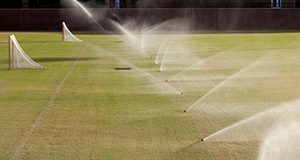
Water is a precious resource that is invaluable to the state of Florida. The amount of water being used daily in the state is estimated at 14.3 million gallons. Part of a series dedicated to describing the preferred ways of learning about agricultural water use in Florida, this study can be used to assist Extension educators and the agricultural industry at large in the development of strategies meant to inform people about the realities of water use. This three-page fact sheet helps Extension educators understand preferred learning mediums so they can provide useful information about agricultural water use. Written by Courtney T. Owens, Alexa J. Lamm, and Ricky W. Telg and published by the Agricultural Education and Communication Department.
http://edis.ifas.ufl.edu/wc247
Integrating Critical Thinking into Extension Programming #5: Using Critical Thinking Styles to Enhance Team Work

The final part of the Integrating Critical Thinking in Extension Programming series, this article continues the discussion of how to take into account critical thinking methods and styles when developing Extension programs. Well-formed working groups allow members to work successfully solve problems as a group. This three-page fact sheet explains the importance of critical thinking styles when it comes to team work. Written by Alexa J. Lamm and published by the Department of Agricultural Education and Communication.
http://edis.ifas.ufl.edu/wc210
Integrating Critical Thinking into Extension Programming #4: Measuring Critical Thinking Styles Using the UFCTI

The fourth installment in the Integrating Critical Thinking into Extension Programming series, this article explains the University of Florida Critical Thinking Inventory (UFCTI), a method of determining a person’s critical thinking style. This three-page fact sheet describes the history and development of the UFCTI, how to interpret the results, and how to use the test to enhance Extension programs. Written by Alexa J. Lamm and published by the Department of Agricultural Education and Communication.
http://edis.ifas.ufl.edu/wc209
Encouraging Landscape Water-Conservation Behaviors #5: Segmenting the Audience Based on HOA Status

The newest article in the Encouraging Landscape Water-Conservation Behavior series, this six-page fact sheet provides Extension professionals with information on segmenting audiences based on their home owner association status. It provides data that shows how HOA membership potentially affects the barriers that households face when adopting conservation measures and explains how Extension professionals should use this information to enhance programming by strategically planning programs based on the similarities between clients.Written by Laura A. Warner, Alexa J. Lamm, Emmett Martin, Joy N. Rumble, and Esen Momol, and published by the Department of Agricultural Education and Communication.
http://edis.ifas.ufl.edu/wc246
